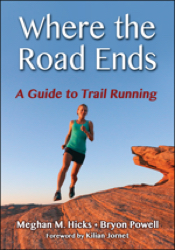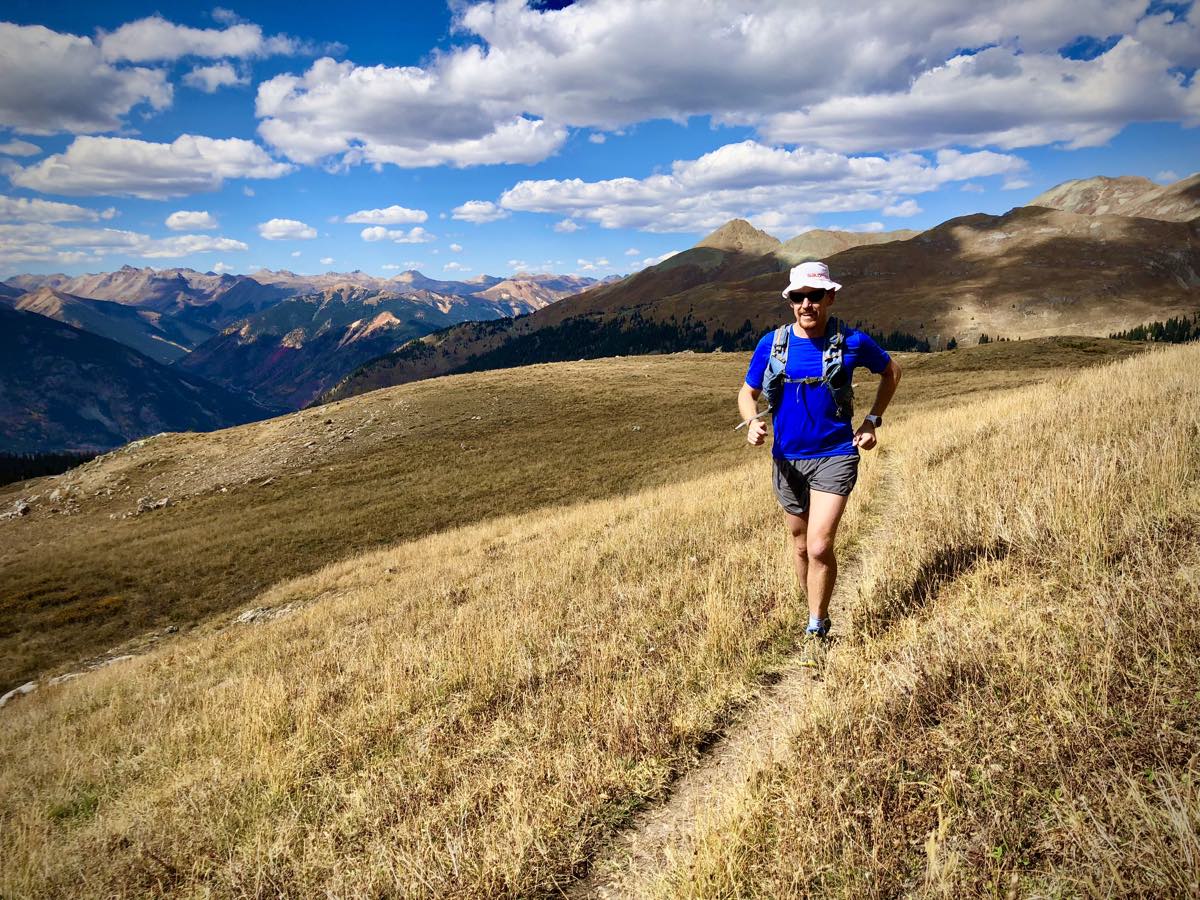
Like this article? Get your copy of the book “Where the Road Ends!”
Welcome to this month’s edition of “Where the Road Ends: A Guide to Trail Running,” where we’re talking about training for trail running.
“Where the Road Ends” is the name of both this column and the book Meghan Hicks and Bryon Powell of iRunFar published in 2016. The book Where the Road Ends: A Guide to Trail Running is a how-to guide for trail running. We worked with publisher Human Kinetics to develop a book offering the information anyone needs to get started, stay safe, and feel inspired with their trail running. The book Where the Road Ends teaches you how to negotiate technical trails, read a map, build your own training plan, understand the basics of what to drink and eat when you run, and so much more.
This column aims to do the same by publishing sections from the book as well as encouraging conversation in the comments section of each article. We want you to feel inspired and confident as you start trail running as well as connected to iRunFar’s community of off-road runners.
In this article, we take an excerpt from Chapter 8 and talk about training for trail running. If you’re reading this, then chances are you’re interested not only in being a trail runner but also in being a better, stronger, more comfortable trail runner. This article will help you make that happen!
When training for trail running, there are five basic types of workouts used by runners of all kinds:
- easy runs
- recovery runs
- long runs
- speedwork
- hill workouts
These five tools can make any runner better, and each has a distinct purpose. In this article, we discuss long runs. Click on the links below to dive into the three other parts of this four-part training mini-series:
Introducing Long Runs
Few things are better than enjoying a long run on the trails. Although it can be challenging, a long run — a run substantially longer than most you complete on a weekly or biweekly basis — is a wonderful opportunity to travel a significant distance through a beautiful natural environment. A long run can end up feeling a lot more like play than work. Beyond these mental benefits, long runs increase your aerobic fitness, strengthen particular muscles, and generally prepare your body to run farther.
You can define your long run either by the distance you cover or the time you are out running. A long run can vary from one to five or perhaps more hours in duration, and the length could vary from 10 to 20 miles (15 to 30 kilometers) or more.
As with an easy run, shoot for conversational pacing. If you go on a long run with friends, you should be able to talk your way through the entire run. A long run differs from an easy run in that the length or duration of the long run is often enough to fatigue your muscles significantly or otherwise exhaust you. In the later stages of a long run, you might find that although your heart and breathing rates still allow talking, the accumulating fatigue in your muscles might distract you from lengthy conversations. For the more technically minded (or the gear geek), aim to keep your heart rate at roughly 65 to 70 percent of its maximum.
If you pace your long runs correctly, they will feel very easy for the first half or more. As your muscles fatigue in the second half, you will have to concentrate on continuing to run despite the discomfort. A common mistake among trail runners is to start long runs too fast or to work too hard when climbing or navigating obstacles, which forces them to slow significantly toward the end of the run. A well-executed long run allows you to run very close to the same pace at the end as you did at the beginning. Because of accumulating fatigue, you may find that your heart rate increases for an identical effort toward the end of a long run. This phenomenon, called cardiac drift, is one of the reasons that running a given pace at the end of a long run feels more difficult than it did at the beginning. With this in mind, it’s okay to run through that sense of accumulating fatigue or to let your heart rate increase a few percentage points above the recommended 70 percent of maximum, but you should avoid running at this increased effort for more than the final 20 or 30 minutes of your long run.

“Where the Road Ends” author Bryon Powell runs long in the Colorado high country in the fall. Photo: iRunFar
If you want to add a little spice to your long run occasionally, try a progressive long run during which you intentionally increase your effort during the second half of the run. Progressive long runs garner all the benefits of the long run while forcing you to work on maintaining a strong effort when fatigue makes doing so a physical and mental challenge. Avoid taking your progression to the extreme, or it will take several days to recover from the effort. It shouldn’t feel as if you’re doing speedwork; it should be a steady, challenging push at the high end of conversational effort. For those interested in heart rate, don’t exceed 80 percent of your maximum heart rate at the end of a progressive long run.
A progressive long run has many looks. For example, you can gently increase your effort starting at about the halfway point and then gently increase it again when you have about a quarter of the run left. In another example, you can complete almost the entire run at a steady effort and then significantly increase your pace for the final three to five miles (five to eight kilometers).
A final recommendation on progressive long runs is to be a bit more mindful of difficult trails than you are on a standard long run so that you can keep your effort within the preceding recommendations. Keep your effort in line with your intentions as you progress, even if mud or a hill requires you to slow your pace a bit.
Excerpted from Where the Road Ends: A Guide to Trail Running, by Meghan Hicks and Bryon Powell. Human Kinetics © 2016.
iRunFar has written about long runs in greater depth. To explore running long, its purpose as a training tool, and how to execute it in detail, check out these two articles:
- No Shortcuts: The Importance of the Long Run by coach Ian Torrence
- How to Choose a Long Run Effort by coach Alex Nichols
Call for Comments
- What tips can you share about long runs?
- What questions do you have about jumping into your first long runs?
